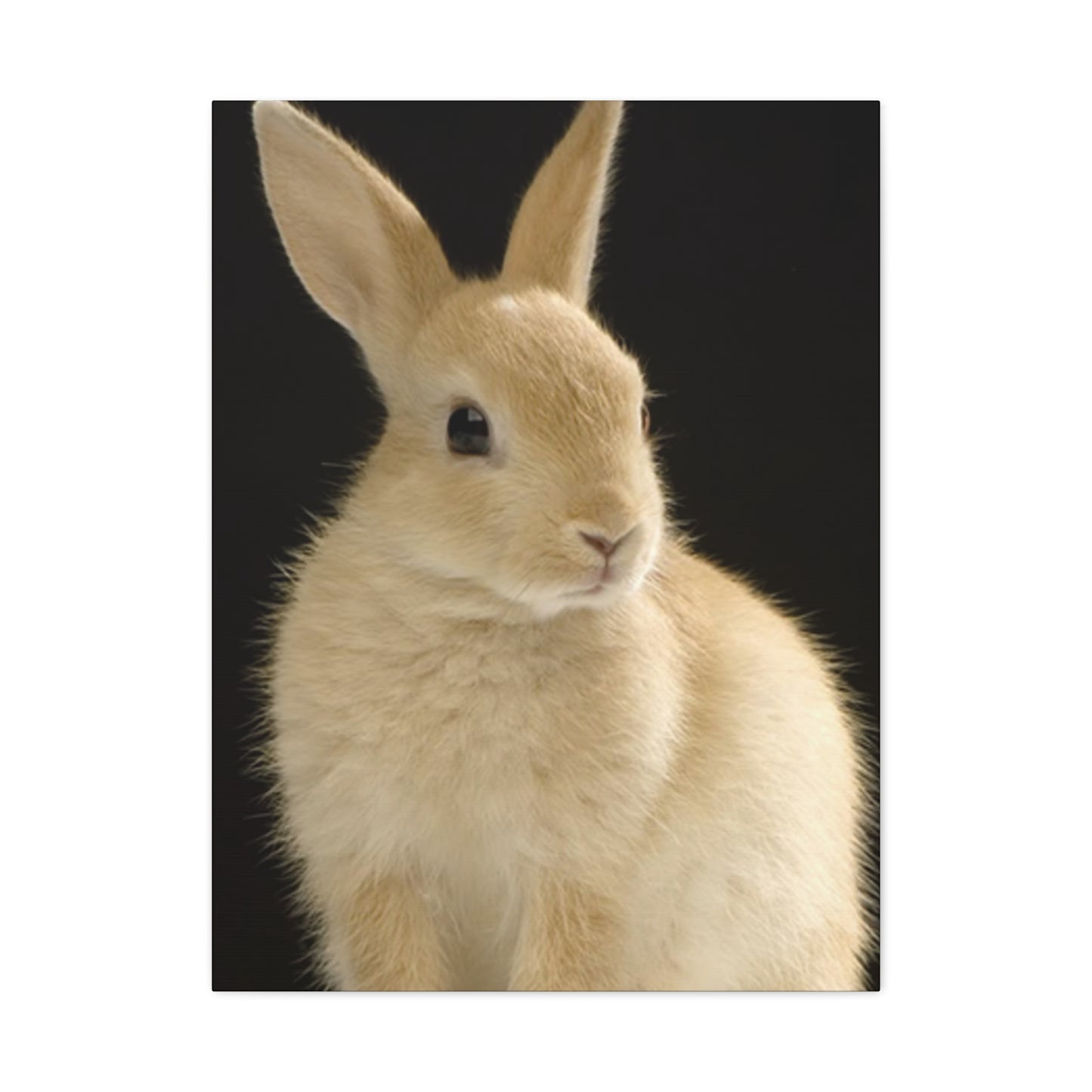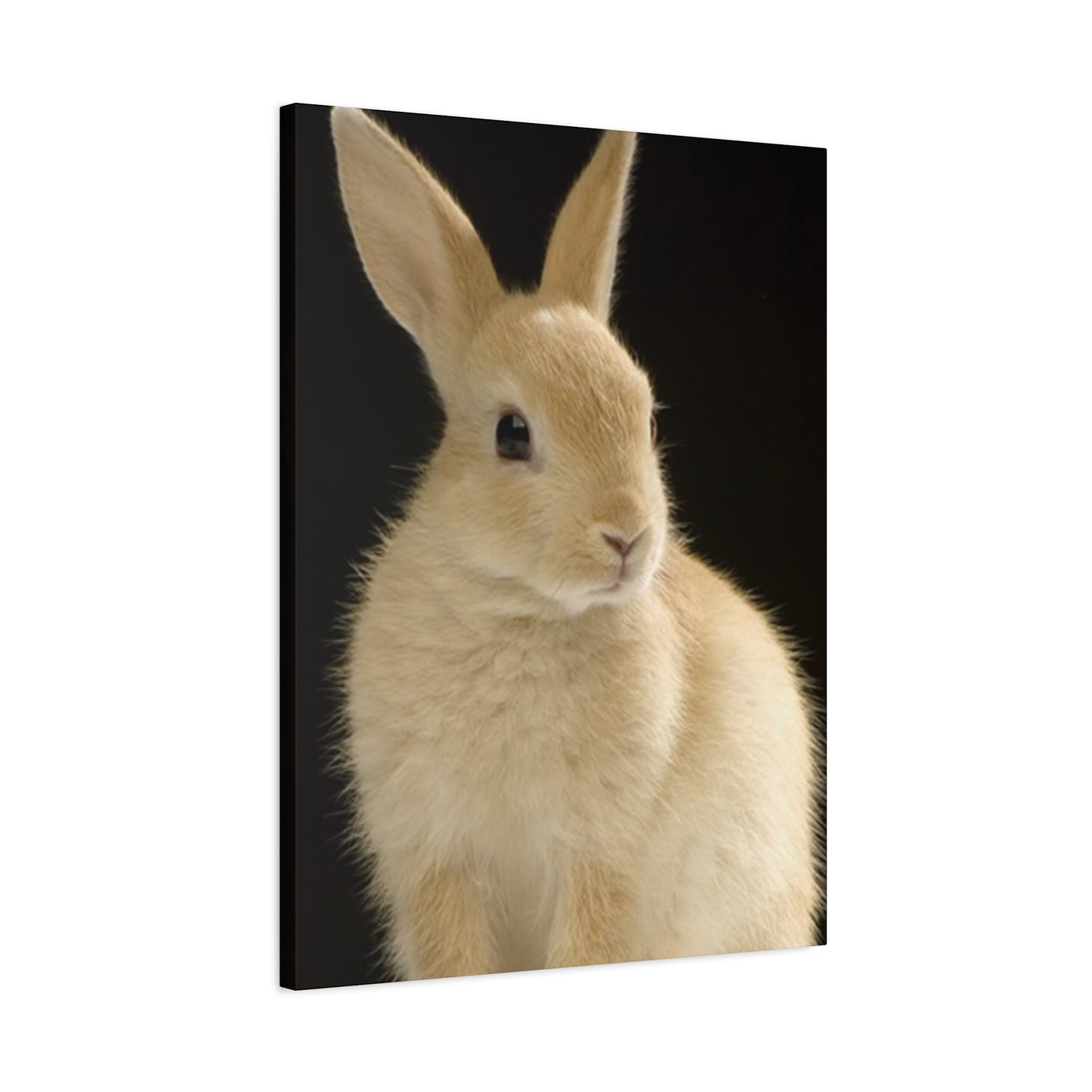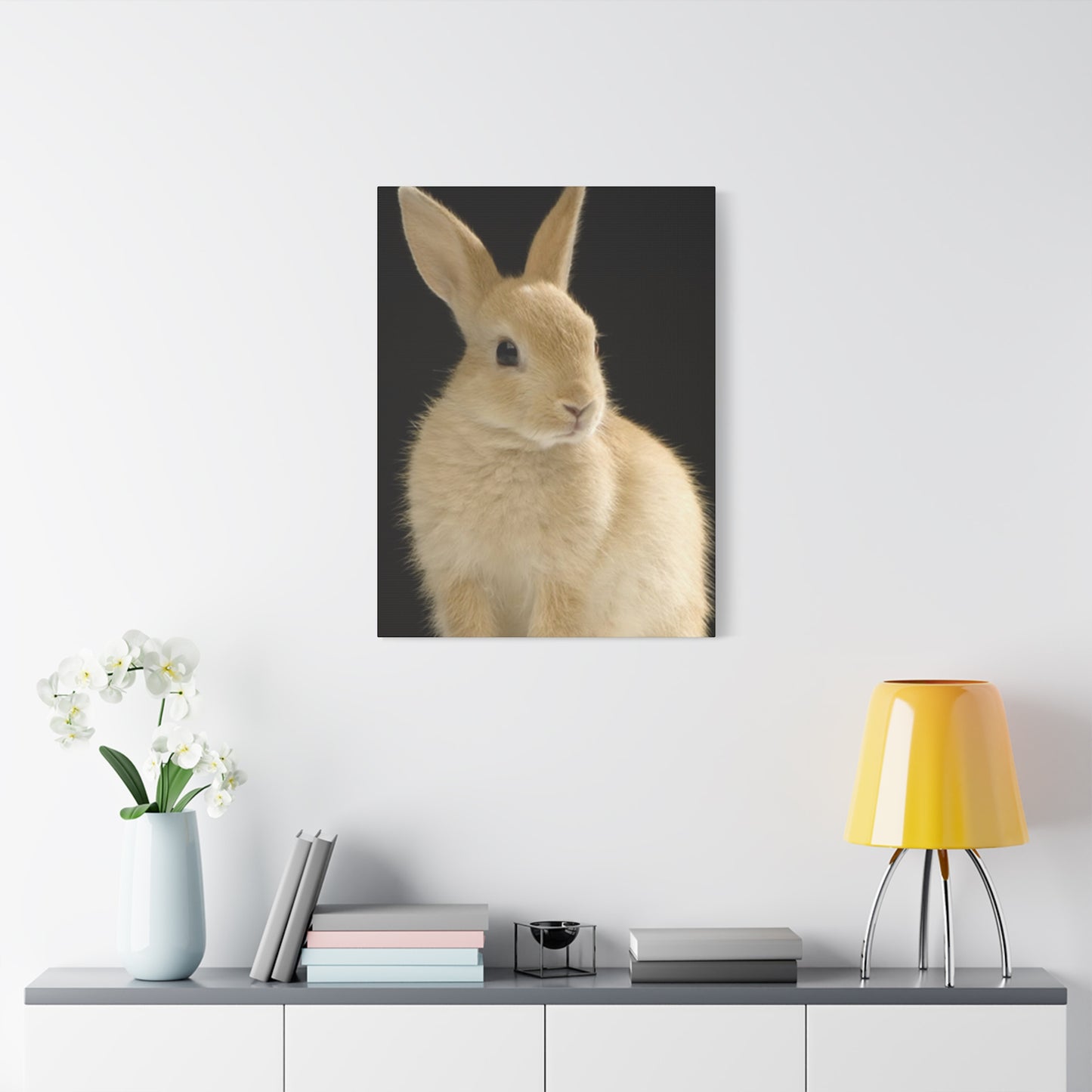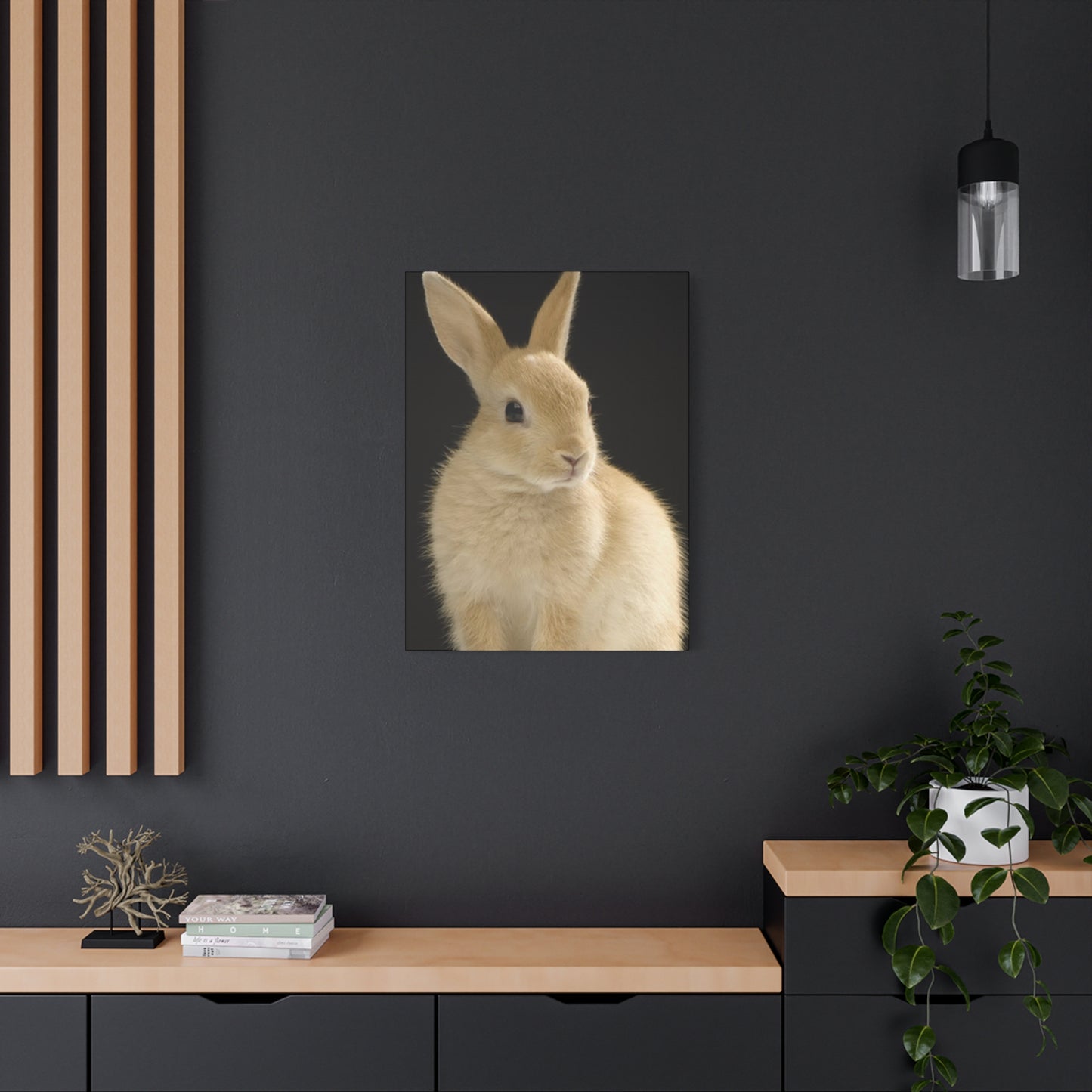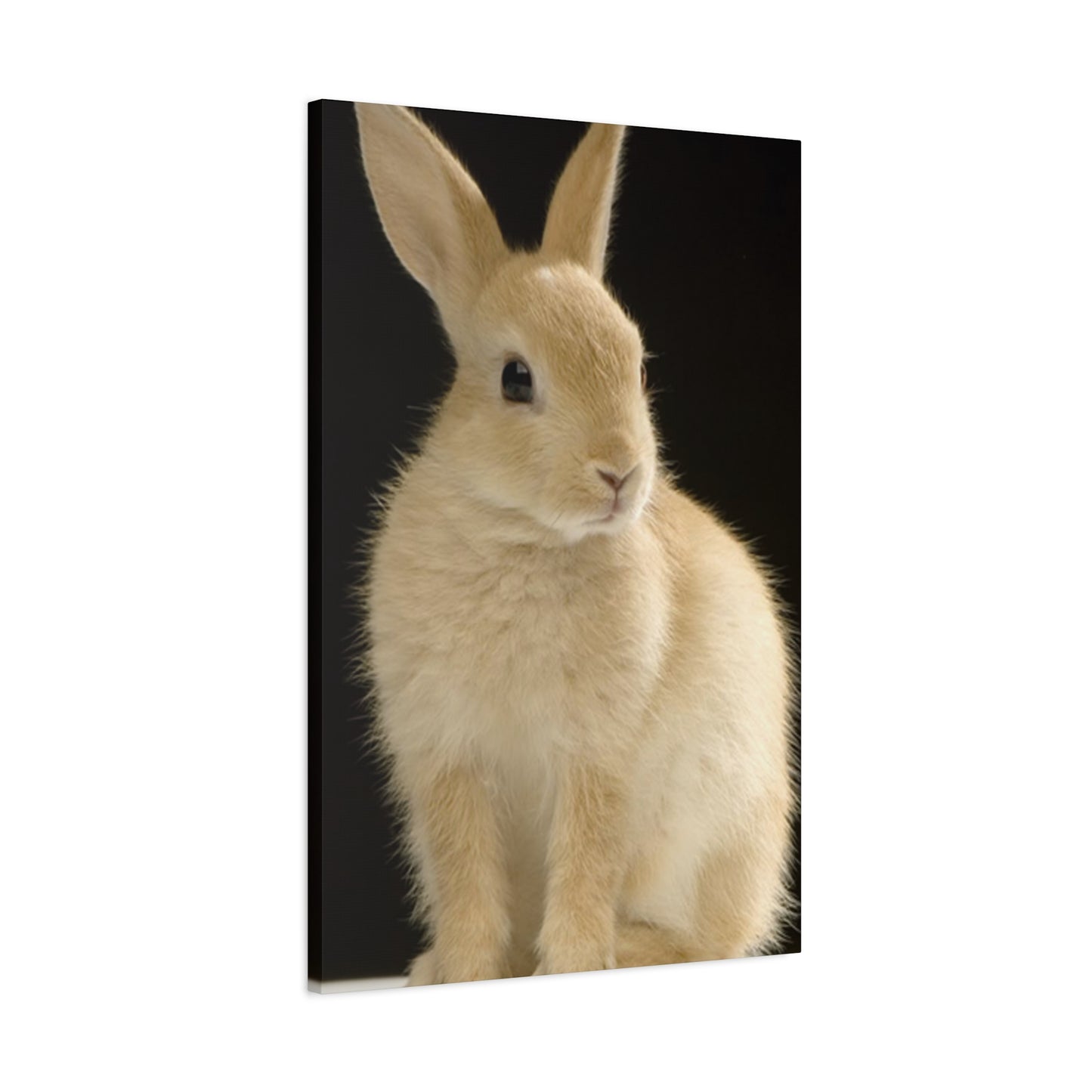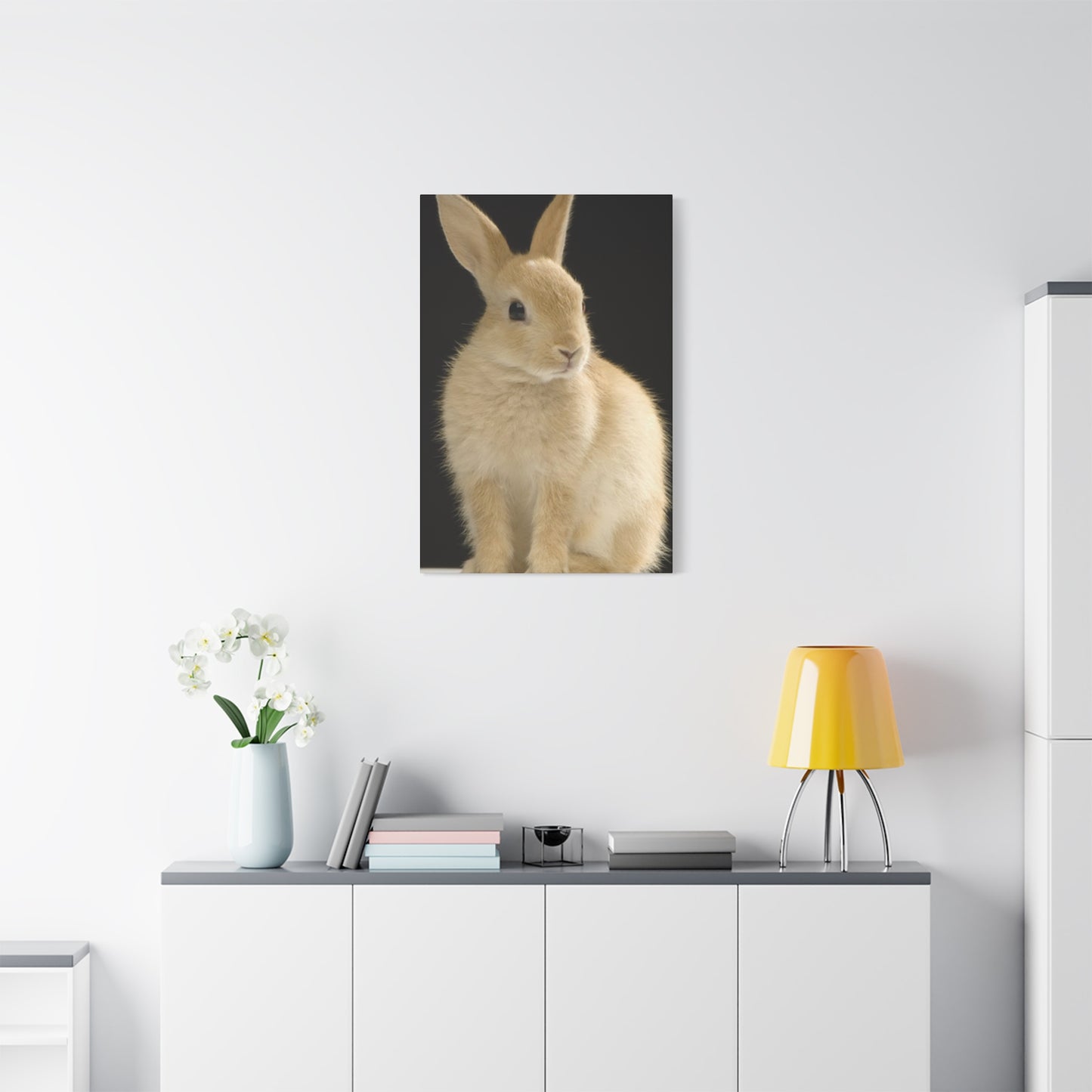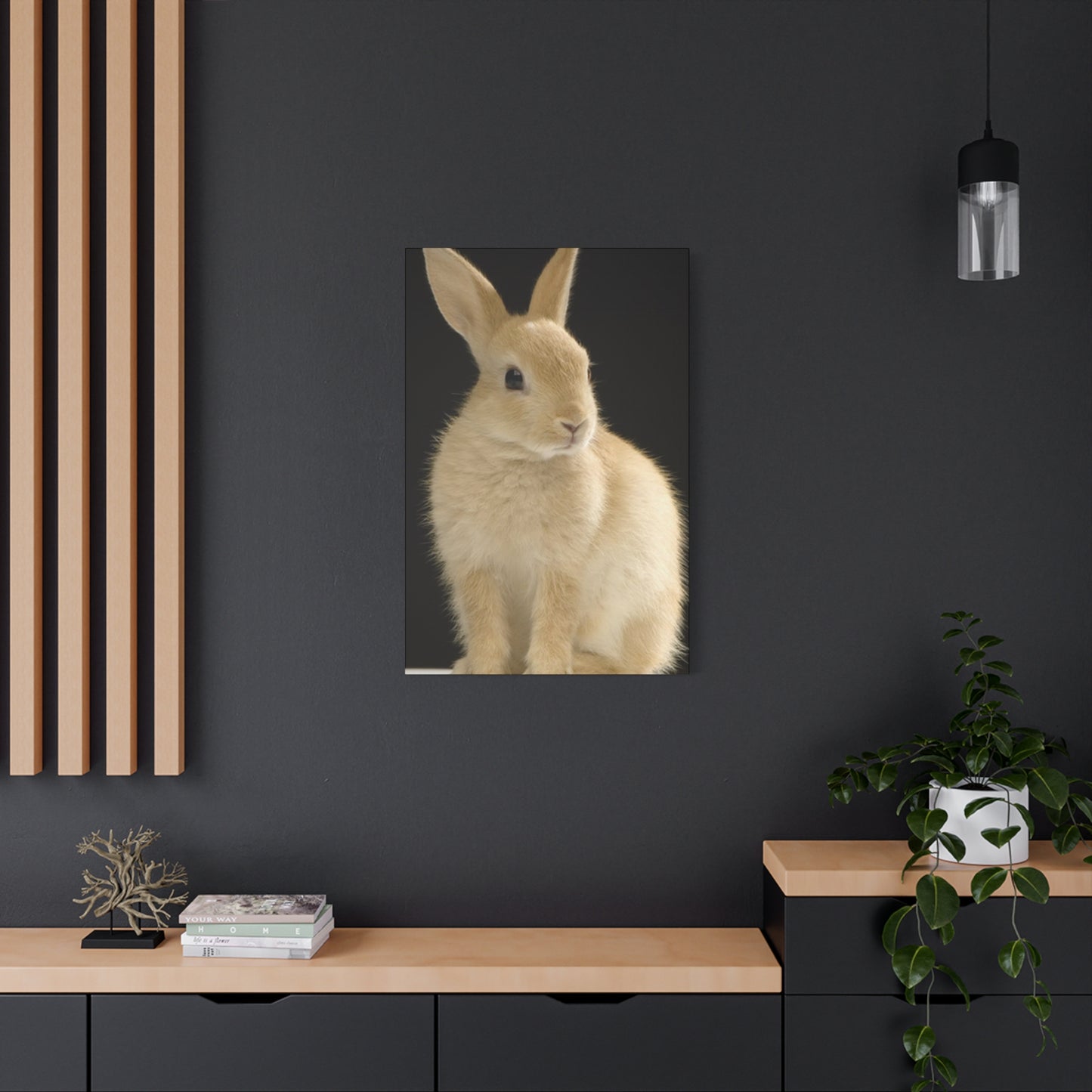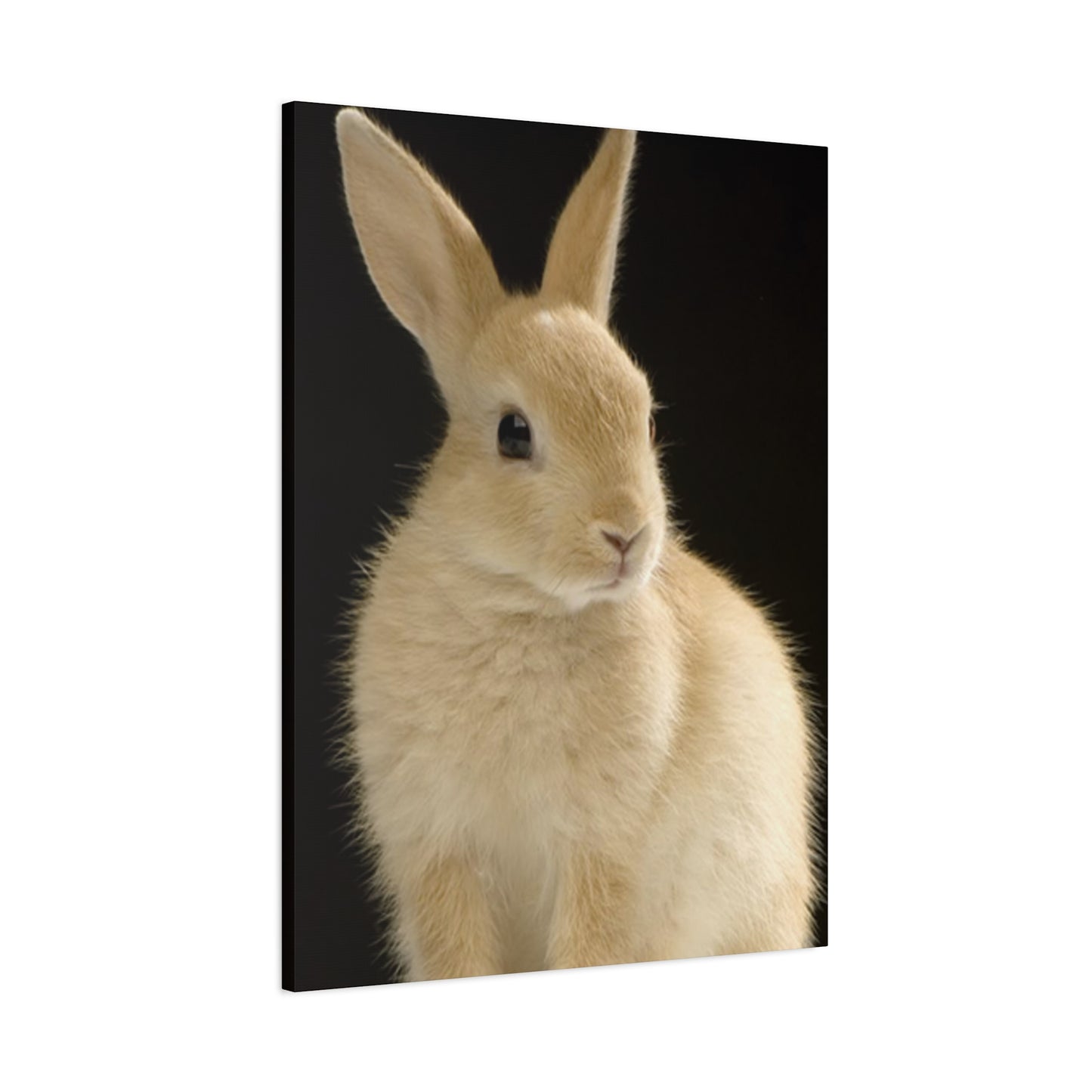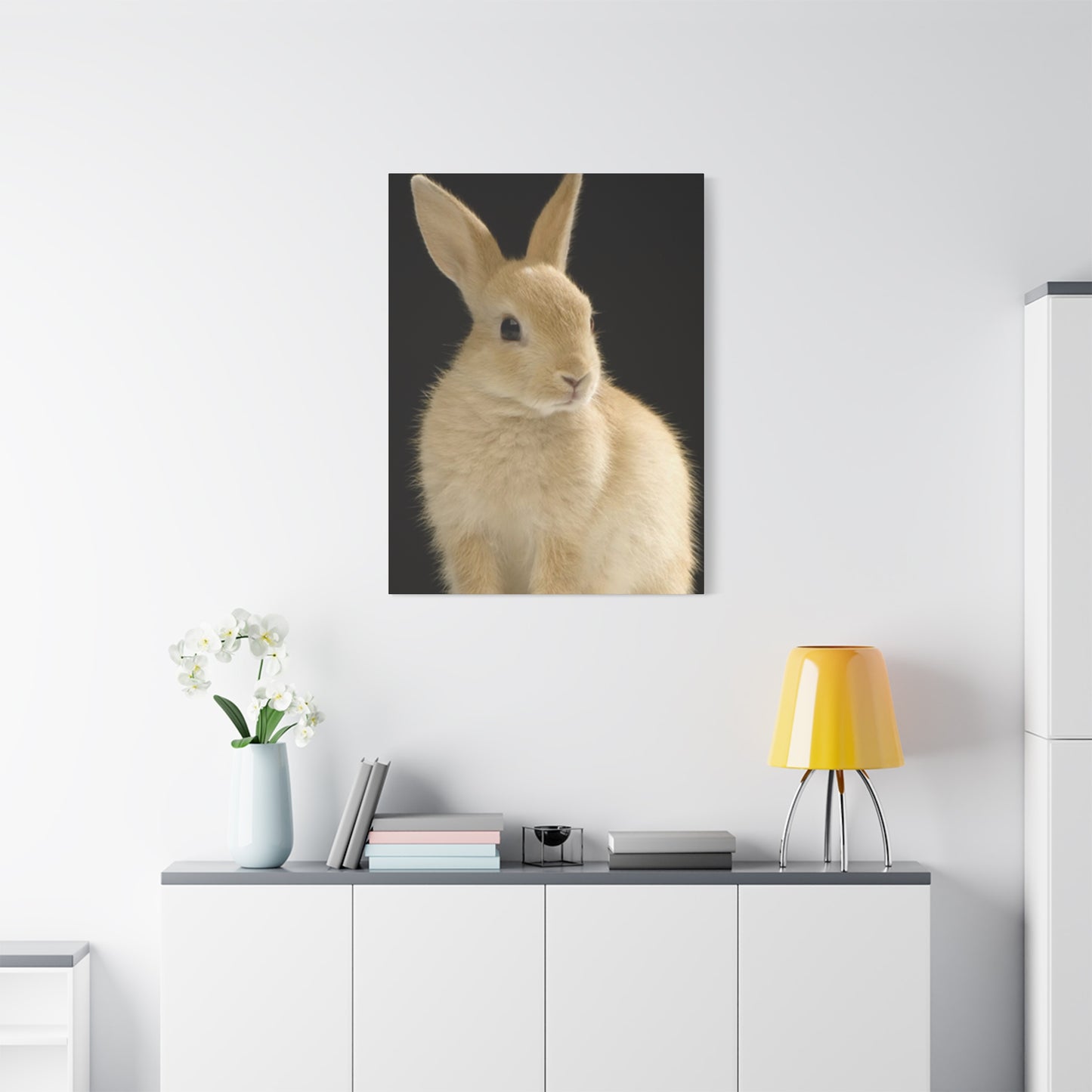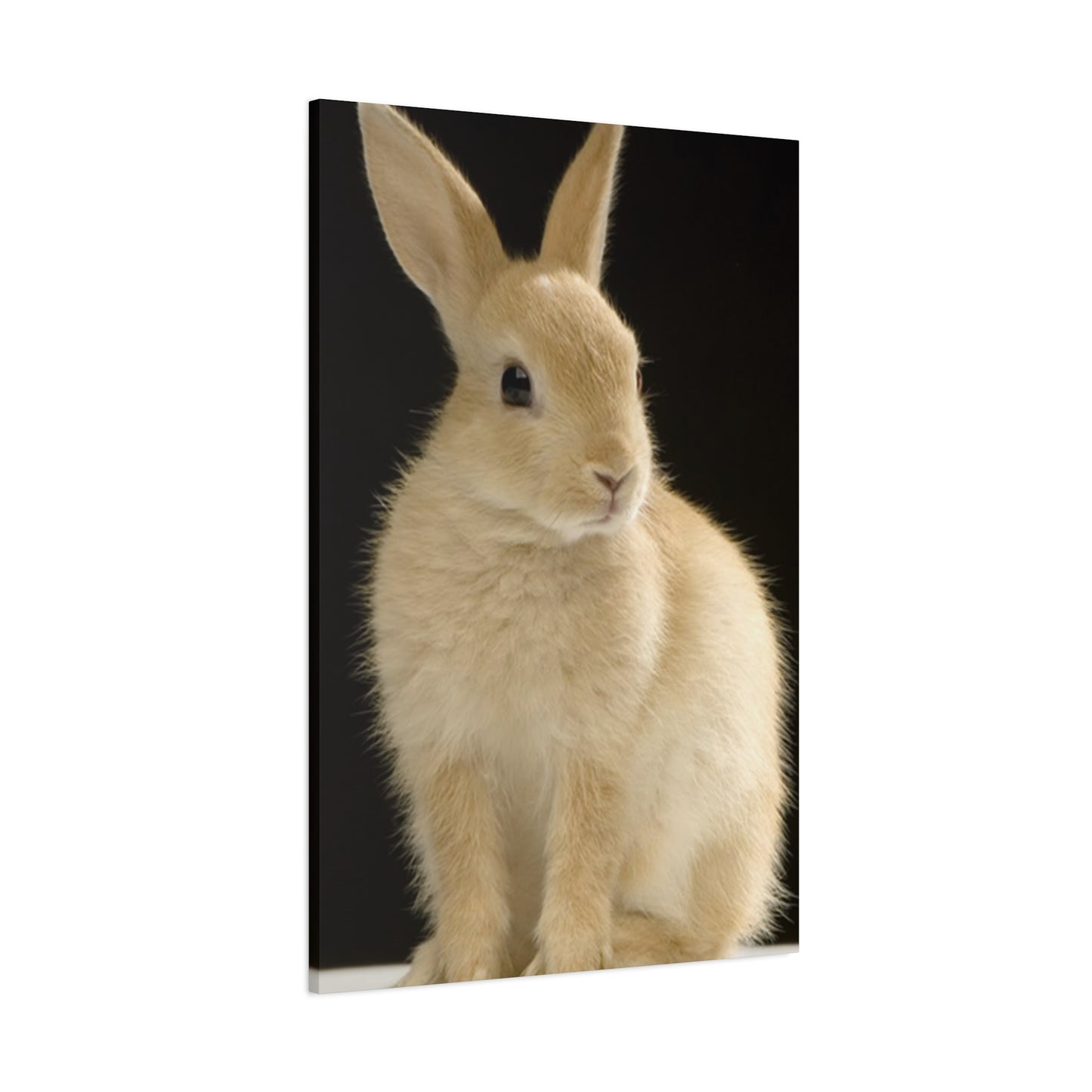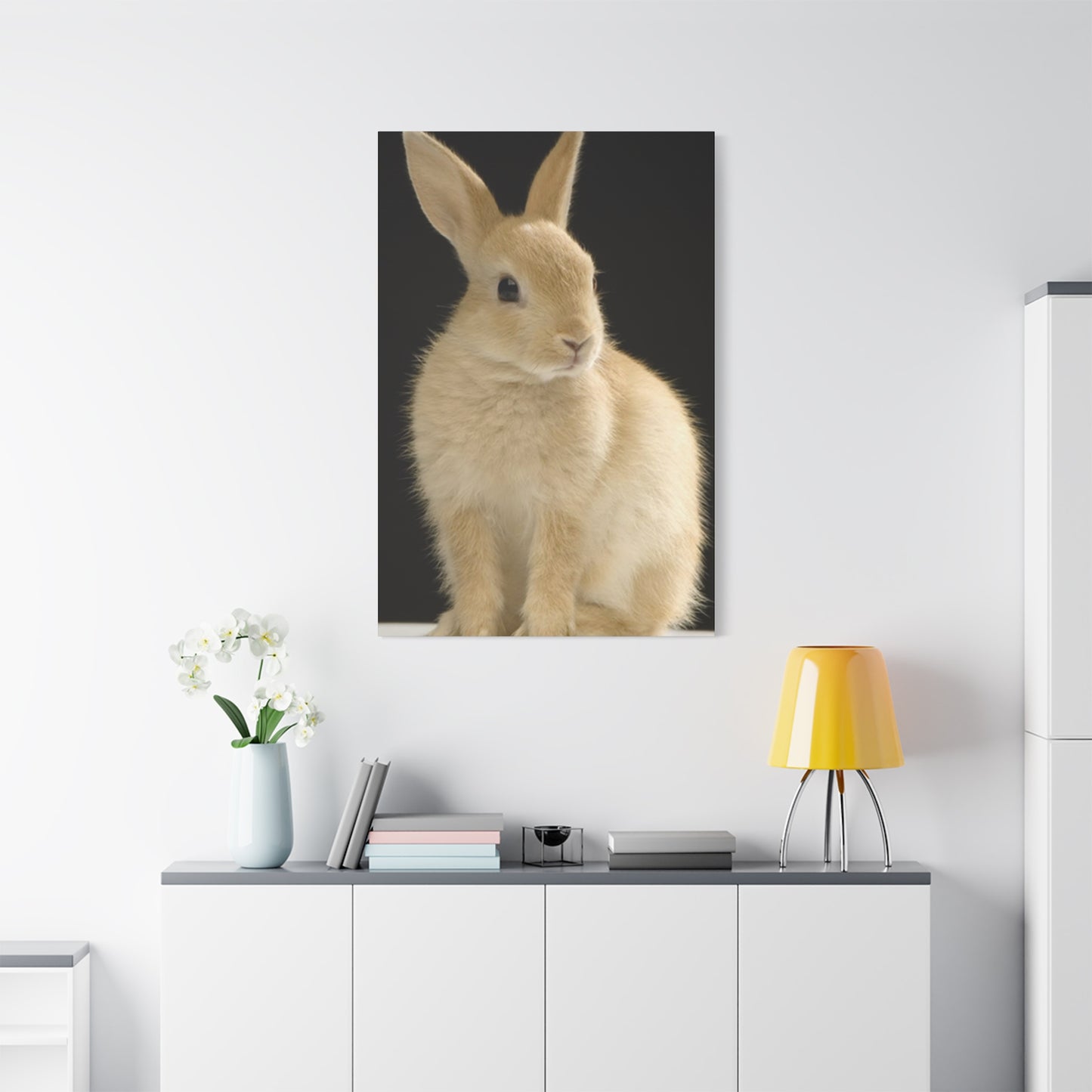The Complete Guide to Small White Rabbit Wall Art: Adding Whimsy and Charm to Your Space
When it comes to creating inviting and peaceful interiors, few decorative elements capture the essence of innocence and tranquility quite like artwork featuring delicate woodland creatures. Among these, depictions of soft-furred bunnies have emerged as a beloved choice for homeowners, interior designers, and art enthusiasts seeking to infuse their spaces with warmth, charm, and a touch of nature's gentle beauty. Whether you're decorating a child's sanctuary, refreshing a living area, or adding character to an entryway, canvas prints showcasing these endearing animals offer versatility, aesthetic appeal, and an immediate sense of calm that transcends design trends.
The popularity of bunny-themed artwork has grown tremendously in recent years, driven by broader movements toward biophilic design, minimalist aesthetics, and the desire to create homes that serve as sanctuaries from the outside world. These pieces work seamlessly across multiple design philosophies, from Scandinavian simplicity to modern farmhouse charm, and they possess an inherent ability to soften any space without overwhelming it. The gentle curves of a rabbit's form, the softness suggested by its fur, and the peaceful demeanor these creatures naturally embody all translate beautifully into visual art that speaks to our innate connection with the natural world.
In this comprehensive exploration, we will delve into the many facets of incorporating bunny-themed canvas art into your home, examining everything from styling techniques and placement strategies to the psychological benefits of animal imagery and the practical considerations of selecting pieces that will stand the test of time. Whether you're drawn to photographic realism, watercolor interpretations, or abstract representations, understanding the versatility and impact of this decorative approach will empower you to make choices that truly enhance your living environment.
Small White Rabbit Wall Art
Compact artwork featuring pale-furred bunnies offers a delicate solution for spaces where subtlety and refinement take precedence. These smaller-scale pieces typically range from eight to sixteen inches in their largest dimension, making them ideal for creating gallery walls, filling narrow wall spaces, or adding interest to areas that might otherwise go unnoticed. The beauty of working with smaller dimensions lies in the flexibility it provides. You can easily rearrange, replace, or add to your collection without the commitment that larger statement pieces require.
When selecting diminutive bunny artwork, consider the level of detail that can be effectively captured at this scale. Close-up portraits of rabbits work exceptionally well, as they allow the viewer to appreciate the subtle textures of fur, the gentle expression in the eyes, and the delicate features that make these creatures so endearing. Alternatively, simplified silhouettes or minimalist line drawings can be equally effective, especially when you want the artwork to complement rather than dominate the surrounding décor.
The frame selection for smaller pieces becomes particularly important, as it can either enhance the artwork's presence or allow it to recede into the background. Thin, simple frames in natural wood tones or matte finishes tend to work best with bunny imagery, as they maintain the organic, gentle quality of the subject matter. For a more contemporary approach, frameless mounting or floating frames can create a clean, modern presentation that allows the artwork itself to take center stage.
Placement strategies for smaller bunny art should consider both visual weight and narrative flow. In hallways, a series of small rabbit prints can create a sense of movement and guide the eye along the passage. Above a desk or workspace, a single small piece positioned at eye level when seated can provide a moment of calm during busy days. On shelving units or bookcases, small canvas prints can be leaned casually against the wall between books and decorative objects, creating layers of visual interest that feel collected rather than overly curated.
Adorable Rabbit Canvas Prints
Canvas prints depicting charming bunnies bring a particular warmth and approachability to any interior setting. The term adorable encompasses a wide range of artistic interpretations, from realistic photographs that capture the genuine sweetness of actual rabbits to stylized illustrations that emphasize their most endearing characteristics through artistic exaggeration or simplification. What unites these varied approaches is their ability to evoke positive emotional responses and create spaces that feel welcoming and nurturing.
The medium of canvas itself contributes significantly to the overall effect of bunny artwork. Unlike paper prints behind glass, canvas has a textural quality that adds depth and dimension to images. This three-dimensional aspect particularly benefits depictions of furry animals, as the canvas texture can subtly suggest the softness of rabbit fur without explicit rendering. Additionally, canvas prints typically feature gallery-wrapped edges, where the image continues around the sides of the frame, creating a finished, cohesive appearance that works beautifully in contemporary interiors.
When evaluating adorable rabbit canvas prints, consider the emotional tone conveyed by the image. Some prints feature bunnies in active poses, perhaps mid-hop or with ears perked in alert curiosity, which can inject energy and playfulness into a space. Others show rabbits at rest, grooming, or in peaceful contemplation, which tend to create a more serene, calming atmosphere. The choice between these approaches should align with the function and desired mood of the room where the artwork will live.
The artistic style of rabbit canvas prints spans a remarkable spectrum. Photographic prints offer the most literal representation, capturing the true beauty of these creatures with all their natural detail intact. Watercolor interpretations bring a softer, more dreamlike quality, with colors that bleed and blend in ways that emphasize gentleness and fluidity. Digital illustrations might employ bold outlines, simplified forms, or unusual color palettes that push the boundaries of realism while still maintaining the essential character that makes rabbits so appealing. Mixed media approaches can combine multiple techniques, creating layered, complex images that reward close examination.
Scale considerations for adorable rabbit canvas prints depend on both the size of your space and the statement you wish to make. In a child's room, a medium-sized canvas print placed at a height appropriate for a young viewer creates a sense of companionship and personalization. In adult spaces, the same subject matter can be elevated through sophisticated framing, thoughtful placement, and integration with other design elements that signal mature aesthetic sensibilities. This versatility makes rabbit imagery suitable for truly any age group, provided the execution and context are appropriately considered.
The practical advantages of canvas prints include their relative durability and ease of maintenance. Unlike paper prints that require protective glass, canvas can be gently dusted or carefully spot-cleaned if necessary. They're also significantly lighter than framed pieces of comparable size, making them easier to hang and reducing stress on walls and hanging hardware. For those who like to refresh their décor regularly, this ease of installation and removal is a significant benefit.
Soft Charm: White Rabbit Art
Artwork featuring white rabbits possesses a particular delicacy and ethereal quality that sets it apart from depictions of rabbits in other colorations. The pristine whiteness of the fur, the subtle variations in tone and shadow that define form and texture, and the inherent associations with purity, innocence, and tranquility all contribute to the special appeal of these pieces. White rabbit art brings a luminous quality to interiors, reflecting light and creating focal points that draw the eye without harsh contrast or visual aggression.
The challenge and artistry involved in successfully depicting white rabbits lies in rendering form and depth without relying on strong color variation. Artists must skillfully employ shadow, highlight, and subtle tonal shifts to distinguish the rabbit from its background, define anatomical features, and suggest the soft texture of fur. When done well, the result is an image that feels almost sculptural in its three-dimensionality despite being rendered on a flat surface. This technical complexity often results in artwork that rewards extended viewing, as subtle details reveal themselves gradually.
White rabbit art pairs beautifully with a wide range of interior color schemes. Against white or cream walls, the artwork creates a tonal harmony that feels serene and cohesive, with the subtle variations between the rabbit and background providing just enough contrast to define the image clearly. When placed against walls in soft pastels, the white rabbit takes on complementary tones that enhance both the artwork and the surrounding color. Even against bolder wall colors, white rabbit art can serve as a calming counterpoint, providing visual relief and a place for the eye to rest within a more stimulating environment.
The symbolic associations of white rabbits extend across cultures and contexts, often representing gentleness, vulnerability, and peaceful coexistence with the natural world. In children's literature and folklore, white rabbits frequently appear as guides, companions, or symbols of magic and transformation. These associations lend white rabbit artwork a narrative quality that goes beyond simple decoration, inviting viewers to project their own stories and meanings onto the image. This narrative dimension makes white rabbit art particularly suitable for spaces where imagination and contemplation are encouraged.
Lighting considerations become especially important with white rabbit artwork. Direct, harsh lighting can wash out subtle details and eliminate the tonal variations that give the image depth and interest. Instead, softer, diffused lighting or positioning the artwork where it receives indirect natural light allows the full range of subtle tones to be appreciated. The way white rabbit art responds to changing light conditions throughout the day can create a dynamic display that looks subtly different from morning to evening, maintaining visual interest and preventing the artwork from becoming static or taken for granted.
Nursery Perfect: Rabbit Wall Prints
Creating a nurturing, stimulating, and peaceful environment for a child's earliest years ranks among the most important and rewarding design challenges parents face. Wall art plays a significant role in shaping the atmosphere of nursery spaces, providing visual interest, supporting cognitive development, and establishing an emotional tone that can influence both infant experience and caregiver mood during long hours spent in the room. Rabbit-themed wall prints have emerged as a favorite choice for nursery décor, offering gentleness, charm, and versatile styling options that grow with the child.
The selection of rabbit prints for nursery spaces should consider the developmental needs and perceptual abilities of infants and young children. In the earliest months, babies perceive high contrast images most clearly, suggesting that rabbit artwork with clear definition between subject and background will be most visually accessible. As visual acuity develops, more subtle tonal variations and complex compositions become appreciable. Choosing artwork that contains both simple, immediately readable elements and more detailed areas that reward closer examination can provide appropriate stimulation across developmental stages.
Color psychology plays an important role in nursery design, with different hues supporting various emotional states and activities. Soft pastels in lavender, mint, or pale pink create soothing environments conducive to calm and rest. Warmer tones in peach, cream, and soft yellow provide gentle energy and cheerfulness without overstimulation. Rabbit artwork incorporating these color palettes through background choices, subtle tinting, or watercolor washes can reinforce the desired emotional atmosphere while maintaining visual interest. Notably, the rabbit itself need not be rendered in realistic colors to be effective; stylized interpretations using age-appropriate color schemes can be equally appealing and developmentally appropriate.
The placement and height of rabbit wall prints in nursery spaces requires thoughtful consideration. Artwork positioned at adult eye level may be too high for an infant in a crib to appreciate. Consider placing some pieces lower on the wall, where they'll be visible to a child lying down or sitting during play. A gallery wall arrangement might include pieces at varying heights, creating visual interest from multiple perspectives and ensuring that the artwork remains engaging as the child grows and their vantage point changes.
Thematic coherence in nursery rabbit art can be achieved through various approaches. Some parents prefer coordinated sets featuring the same rabbit character in different poses or settings, creating a cohesive narrative across multiple pieces. Others mix rabbit artwork with complementary imagery of other gentle woodland creatures, creating a nature-inspired environment that introduces visual variety while maintaining thematic unity. The rabbit's natural associations with gardens, meadows, and pastoral settings also allow for easy integration with botanical prints, floral artwork, or landscape pieces that expand the naturalistic theme.
Safety considerations for nursery wall art should not be overlooked. Ensure that all pieces are securely mounted with appropriate hardware for the wall type and artwork weight. Avoid hanging heavy or breakable items directly over the crib or changing area. Canvas prints offer advantages in nursery settings due to their lighter weight and lack of glass, eliminating concerns about shattered glass should a piece fall. If you do choose framed prints, ensure frames are of high quality with secure backing and hardware.
The longevity of rabbit-themed nursery art deserves consideration as well. Will these pieces remain appropriate and appealing as your child grows beyond infancy? Artwork that strikes a balance between youthful charm and sophisticated execution can successfully transition from nursery to toddler room to the quarters of an older child, providing continuity and familiar comfort during periods of change. Selecting pieces with timeless aesthetic qualities rather than those tied to specific infant-focused trends may offer better long-term value and continued relevance.
Gentle Aesthetic: Bunny Canvas Art
The concept of a gentle aesthetic encompasses design choices that prioritize softness, subtlety, and visual quietness over bold statements and dramatic contrasts. Within this framework, bunny canvas art serves as an ideal decorative element, naturally embodying the qualities that define gentle design through both subject matter and typical artistic treatment. These pieces create environments that feel nurturing, peaceful, and psychologically safe, offering refuge from the visual noise and stimulation that characterize much of contemporary life.
Bunny canvas art contributing to a gentle aesthetic typically features soft color palettes with subtle variations rather than stark contrasts. Imagine cream-colored rabbits against backgrounds of pale sage, dusty blue, or warm beige, with tonal transitions that flow smoothly without jarring shifts. The composition itself often emphasizes curves over angles, with the natural roundness of a rabbit's body, the soft arc of its back, and the gentle oval of its face all contributing to a sense of flowing, organic form that our eyes find innately soothing.
The texture of canvas as a medium enhances the gentle qualities of bunny artwork. The slight grain visible in canvas adds a tactile dimension that softens the image, preventing it from feeling too crisp or harsh. When viewed from a distance, this texture helps colors blend optically, creating an impressionistic effect that emphasizes mood and feeling over precise detail. Up close, the texture becomes more apparent, inviting viewers to appreciate the materiality of the artwork and creating a more intimate relationship with the piece.
Subject matter choices within bunny canvas art can reinforce or modulate the gentle aesthetic. A rabbit at rest, perhaps grooming or sleeping, communicates ultimate relaxation and security. A bunny in a meadow surrounded by soft wildflowers creates associations with gentle spring days and natural beauty. Even a rabbit simply sitting and observing, with a calm, peaceful expression, can project an atmosphere of serene contemplation that influences the mood of the entire space. These subtle narrative elements work on both conscious and unconscious levels to shape our emotional response to the environment.
Modern White Rabbit Poster Decor
The contemporary interior design landscape embraces clean lines, uncluttered spaces, and a carefully curated approach to decorative elements. Within this modern context, white rabbit poster décor offers a compelling option that satisfies both aesthetic and emotional needs. These pieces bring the warmth and organic quality necessary to prevent modern spaces from feeling cold or sterile, while their simplified, often graphic presentation aligns perfectly with modern design principles emphasizing clarity and intentionality.
Modern white rabbit posters distinguish themselves from more traditional or romantic interpretations through their design approach. Bold graphic elements, high contrast between the rabbit and background, geometric composition, and a tendency toward simplified rather than detailed rendering all contribute to their distinctly contemporary feel. A modern poster might feature a white rabbit's silhouette in sharp profile against a solid colored background, with no additional elements or context to distract from the pure form. Alternatively, it might employ unexpected cropping, showing only a portion of the rabbit in a way that creates an abstract quality while still remaining recognizable.
The color palettes employed in modern white rabbit poster décor tend toward either stark contrast or carefully calibrated neutrals. Black and white combinations deliver maximum graphic impact, with the white rabbit popping dramatically against dark backgrounds. Alternatively, modern neutrals like charcoal gray, warm taupe, or subtle sage provide sufficient contrast to define the rabbit clearly while maintaining a softer, more versatile appearance that integrates easily with various color schemes. Occasional use of accent colors in pure, saturated tones can add contemporary energy, particularly when those colors are echoed elsewhere in the space through accessories or furniture.
Typography sometimes plays a role in modern white rabbit poster décor, with single words or short phrases integrated into the composition. These might be descriptive labels in simple sans-serif fonts, poetic fragments that add narrative dimension, or even single letters used as graphic elements. When typography is included, it should enhance rather than compete with the primary image, maintaining appropriate scale relationships and respecting the overall compositional balance. The choice of typeface becomes important, with clean, modern fonts supporting the contemporary aesthetic while ornate or script fonts would create confusion by introducing conflicting style signals.
Tranquil Spaces with Rabbit Art
The creation of truly tranquil spaces within our homes serves increasingly important functions in contemporary life. These areas provide respite from stimulation, support stress recovery, facilitate meditation or contemplative practices, and simply offer psychological breathing room in lives often characterized by relentless demands and activity. The deliberate incorporation of rabbit art into these spaces contributes significantly to their calming effect, both through the inherent qualities of the imagery and through the associative meanings we attach to these gentle creatures.
Rabbit art supports tranquility through multiple mechanisms. On a purely visual level, the soft forms, gentle colors, and lack of sharp edges or aggressive elements create compositions that our nervous systems perceive as non-threatening and safe. This perception, operating largely below conscious awareness, allows us to relax more fully than we might in environments dominated by angular forms, high contrast, or agitated visual rhythms. The depiction of rabbits themselves, especially when shown at rest or in peaceful settings, provides implicit behavioral cues that we unconsciously mirror, potentially slowing our breathing, relaxing our muscles, and settling our minds.
The associative meanings connected with rabbits further enhance their tranquilizing effect. These animals rarely appear in aggressive contexts within art or culture; instead, they're consistently associated with gentleness, vulnerability, peacefulness, and harmonious existence within natural settings. When we encounter rabbit imagery, these associations activate automatically, bringing with them emotional tones and psychological states aligned with those qualities. This associative network can be surprisingly powerful, subtly shifting our mood and mindset simply through visual exposure.
Placement strategies for rabbit art in tranquil spaces should prioritize visibility from positions where you'll actually spend time seeking peace and restoration. In a reading nook, position the artwork where you'll see it when seated in your favorite chair, perhaps at a slightly lower height than typical eye level to encourage the downward gaze associated with relaxation. In a bedroom designed to support excellent sleep, place rabbit art where it's visible from the bed but not directly in your line of sight when lying down, allowing it to be present without demanding attention when you're seeking to quiet your mind.
Lighting in tranquil spaces featuring rabbit art deserves careful consideration, as harsh or overly bright illumination can undermine the calm atmosphere you're working to create. Natural light filtered through sheer curtains creates a soft, diffused effect that allows rabbit artwork to be appreciated without glare or harsh shadows. For artificial lighting, dimmable fixtures allow adjustment to different activities and times of day, supporting both functional needs and atmospheric goals. Consider uplighting or wall washing techniques that illuminate the artwork indirectly, creating a gentle glow rather than spotlighting that can feel aggressive or theatrical.
Color coordination between rabbit artwork and the broader tranquil space amplifies calming effects. Analogous color schemes, using colors adjacent on the color wheel, create harmony through similarity while maintaining subtle variation that prevents boredom. If your rabbit art features a white bunny against a soft blue-gray background, extending those tones into wall colors, textiles, and accessories creates enveloping coherence that feels psychologically soothing. Avoid introducing jarring contrasts or highly saturated colors that would compete with the peaceful mood you're cultivating, saving those elements for spaces designed to energize rather than calm.
Entryway Accent: Bunny Canvas Print
First impressions establish tone and expectation, making the entryway one of your home's most important spaces despite often being among its smallest. The décor choices in this transitional zone communicate welcome, set stylistic expectations, and begin the process of helping both residents and visitors shift from the external world into the particular atmosphere of your home. A well-chosen bunny canvas print in the entryway provides multiple benefits, serving as a focal point, conversation starter, and immediate signal of the warmth and character they'll find throughout your home.
The selection of bunny canvas prints for entryway use should consider the viewing distance and duration typical of these spaces. People move through entryways relatively quickly, so imagery needs to register clearly without requiring extended examination. A bunny portrait with clear features, good contrast between subject and background, and straightforward composition will be immediately readable even to someone passing through rapidly. However, because residents will view this artwork repeatedly over time, it should also contain enough interest and quality to withstand this frequent exposure without becoming tiresome.
Scale considerations for entryway bunny art require balancing several factors. The piece needs sufficient presence to register as intentional décor rather than afterthought, but it shouldn't overwhelm the typically modest dimensions of entry spaces. Medium-sized canvases, roughly 16 by 20 inches to 24 by 36 inches, often work well in standard entryways, providing impact without domination. If your entry includes a significant amount of wall space, a larger piece or a grouping of smaller works might be appropriate. Conversely, in tight spaces, a small canvas positioned strategically can be more effective than a larger work that feels cramped.
The relationship between bunny canvas art and other entryway elements requires thoughtful coordination. If you have a console table or bench below the artwork, consider how the piece relates to these furnishings in scale and style. The artwork might echo shapes or colors present in the furniture, creating visual connections that make the space feel cohesive. Alternatively, it might provide deliberate contrast, perhaps introducing organic curves to balance angular modern furnishings or bringing color into an otherwise neutral space. Either approach can work well if executed with intention and attention to the overall effect.
Practical considerations for entryway bunny canvas art include durability and ease of maintenance. Entries are high-traffic zones where artwork may occasionally be bumped, exposed to temperature fluctuations when doors open, or subjected to higher than average dust accumulation. Canvas prints offer advantages in all these areas compared to more delicate paper prints behind glass. Their wrapped edges are less vulnerable to damage than frames with corners and edges, and canvas can be gently cleaned if necessary without the concerns associated with moisture and paper. These practical benefits allow you to choose based purely on aesthetic appeal rather than worrying excessively about fragility.
Cozy Corner: White Rabbit Wall Art
The concept of a cozy corner speaks to our fundamental need for spaces that feel protected, intimate, and personally claimed within the larger context of our homes. These small areas, whether carved from unused alcoves, created in bedroom corners, or claimed from larger rooms, serve as personal sanctuaries where we retreat for reading, contemplation, creative work, or simple respite. White rabbit wall art plays a special role in defining and enhancing these intimate spaces, its gentle presence reinforcing the nurturing qualities that make corners truly cozy.
Creating a cozy corner begins with identifying a suitable location that offers some degree of separation from the main traffic and activity patterns of your home. A spot near a window provides natural light for daytime use, though corners away from windows can be equally effective with proper lighting. Once the location is established, white rabbit wall art helps to psychologically define the space, signaling its special purpose and creating a focal point that anchors the corner's design. The artwork essentially says this is a place apart, where different rules apply and where comfort takes precedence.
The specific characteristics of white rabbit art make it particularly suitable for cozy corners. The soft coloration doesn't aggressively compete for attention, allowing the space to maintain its quiet, restful quality. At the same time, the recognizable subject matter provides enough visual interest to prevent the corner from feeling empty or undefined. The inherent gentleness of rabbit imagery reinforces the protective, nurturing qualities you want the space to embody, while the whiteness of the subject creates a luminous quality that helps the corner feel lighter and more open despite its typically modest dimensions.
Furniture and textile choices in a cozy corner should complement and extend the mood established by white rabbit wall art. A comfortable chair, perhaps a cushioned armchair or a pile of floor pillows, provides the essential seating that makes the corner functional. Soft throws and additional pillows enhance comfort while introducing texture that relates to the suggested softness of rabbit fur in the artwork. A small side table holds books, beverages, or a reading lamp, completing the practical requirements of the space. Each element should be chosen not only for function but for its contribution to the overall sensory experience of coziness.
Lighting design for cozy corners with white rabbit wall art requires layering to serve different needs and moods. Natural light during the day provides the broad illumination necessary for reading or handwork, while also allowing the subtle tonal variations in white rabbit art to be fully appreciated. For evening use, a reading lamp with a warm-toned bulb provides focused task lighting, while perhaps a string of fairy lights or a small accent lamp creates ambient lighting that supports relaxation. The ability to adjust lighting levels allows the corner to serve multiple purposes while maintaining its fundamentally cozy character.
Whimsical Touch: Rabbit Wall Decor
Whimsy in interior design introduces playfulness, imagination, and lighthearted charm that counterbalances the practical concerns and serious aesthetics often dominating our living spaces. Rabbit wall décor lends itself beautifully to whimsical treatment, as these creatures possess an inherent charm that translates easily into delightful, smile-inducing artwork. Incorporating whimsical rabbit pieces allows adults to maintain connection with imaginative thinking while creating environments that feel joyful and spirited rather than overly serious or formal.
Whimsical rabbit wall décor distinguishes itself through several characteristic approaches. Anthropomorphization presents rabbits engaging in human activities, wearing clothing, or displaying exaggerated expressions that suggest personality and emotion beyond what we'd observe in actual animals. Unexpected contexts place rabbits in surprising situations or settings, perhaps a bunny in a teacup, wearing a crown, or surrounded by oversized flowers that make it appear miniature. Artistic exaggeration emphasizes certain features, creating rabbits with impossibly large ears, comically expressive eyes, or body proportions that bend reality in charming ways. All these approaches invite viewers to enter a slightly fantastical world where imagination takes precedence over literal representation.
The color palettes often employed in whimsical rabbit décor tend toward either soft pastels that create a storybook quality or surprisingly bold, saturated hues that inject energy and cheerfulness. Unlike naturalistic rabbit art that restricts itself to colors actually found in nature, whimsical pieces might feature pink rabbits, blue bunnies, or creatures with multicolored fur. These unexpected color choices signal immediately that we've entered the realm of imagination rather than documentation, giving viewers permission to engage with the artwork in a spirit of play rather than critical observation.
Incorporating whimsical rabbit wall décor into adult spaces requires confidence and a willingness to resist overly rigid notions of what constitutes appropriate mature design. The key lies in execution and context. A beautifully crafted, artistically sophisticated whimsical rabbit piece positioned in a thoughtfully designed space reads as a deliberate, confident choice that adds personality and warmth. The same piece in a space lacking overall design coherence might seem merely juvenile or haphazard. Supporting elements matter as well; when whimsical rabbit art is integrated with quality furnishings, sophisticated color schemes, and curated accessories, it registers as an intentional point of charm rather than a design mistake.
Gallery wall arrangements offer excellent opportunities for incorporating whimsical rabbit wall décor alongside more traditional pieces. The variety inherent in gallery walls allows whimsical elements to function as accent notes within a broader composition. You might include one or two whimsical rabbit prints among several more straightforward pieces, creating moments of delight and surprise without allowing the display to become overwhelmingly cute or childish. This approach works particularly well in casual spaces like breakfast nooks, mudrooms, or home offices where a bit of levity is welcome and appropriate.
Nature-Inspired Bunny Canvas Prints
The biophilic design movement recognizes humans' innate need for connection with nature and seeks to incorporate natural elements into built environments in ways that support wellbeing, reduce stress, and enhance quality of life. Nature-inspired bunny canvas prints serve this objective beautifully, bringing the essence of natural environments indoors through imagery that captures rabbits within their native habitats or alongside complementary natural elements. These pieces satisfy our deep-seated desire for connection with the living world while offering all the practical advantages of artwork over actual natural elements.
Nature-inspired bunny canvas prints typically situate their subjects within contextual environments rather than presenting them against abstract or neutral backgrounds. A rabbit might be shown in a meadow of wildflowers, surrounded by tall grass with seed heads catching light, nestled among fallen autumn leaves, or sitting at the entrance to a burrow in an earthen bank. These environmental contexts provide narrative richness that simple portrait-style images lack, inviting viewers to imagine the fuller ecosystem the rabbit inhabits and creating connections between the artwork and broader natural cycles and systems.
The botanical elements often featured in nature-inspired bunny prints deserve attention in their own right. Artists might pair rabbits with botanically accurate depictions of plants native to the same habitats, creating prints that function simultaneously as charming animal art and as subtle education about plant species and their characteristics. Wildflowers like clover, dandelions, violets, and buttercups frequently appear, as these plants commonly grow in the meadows and field edges rabbits favor. Some pieces incorporate cultivated garden plants like roses, peonies, or lavender, creating associations between rabbits and the domestic gardens they sometimes visit, for better or worse from a gardener's perspective.
Seasonal variation in nature-inspired bunny canvas prints allows you to rotate artwork in harmony with the changing year, maintaining freshness and relevance in your décor. Spring prints might show rabbits amid emerging greenery and early flowers, capturing the season's energy of renewal and growth. Summer pieces could feature lush, full vegetation with rabbits partially hidden in tall grass or resting in dappled shade. Autumn prints might incorporate warm-colored foliage, harvested crops, or rabbits with thicker coats preparing for winter. Winter representations could show rabbits against snow, nestled in evergreen shelter, or in the subtle browns and grays of dormant season landscapes. This seasonal rotation keeps your connection to natural cycles alive even within indoor spaces.
The color palettes of nature-inspired bunny prints naturally tend toward earth tones, soft greens, gentle blues, and the varied hues found in botanical subjects. These organic color ranges integrate seamlessly with biophilic design principles and complement the natural materials like wood, stone, and fiber that often feature in nature-inspired interiors. However, nature provides plenty of vivid color as well, particularly in flowers and fruits, allowing nature-inspired prints to introduce brighter accents when desired while still maintaining their grounding in the natural world.
Scandinavian Style: Rabbit Art
Scandinavian design philosophy, emerging from the Nordic countries, emphasizes functionality, simplicity, clean lines, and a harmonious relationship with nature. This aesthetic approach values quality over quantity, finds beauty in restraint, and creates spaces that feel light, airy, and psychologically spacious despite often modest physical dimensions. Rabbit art interpreted through a Scandinavian lens embodies these principles, resulting in pieces that enhance spaces without overwhelming them and that maintain their appeal through changing trends and fashions.
The defining characteristics of Scandinavian-style rabbit art include simplified forms that capture the essence of the subject without excessive detail, neutral color palettes typically working within whites, grays, blacks, and natural wood tones, and compositions that incorporate significant negative space. A typical Scandinavian rabbit print might show a simple side profile of a white or gray rabbit against a plain white or pale gray background, with the animal positioned off-center to create asymmetric balance and visual interest through emptiness rather than through added elements.
Material authenticity matters greatly in Scandinavian design, and this extends to how rabbit art is presented. Natural wood frames in light finishes like birch, ash, or oak align perfectly with Scandinavian principles, bringing organic warmth without heaviness. The wood grain becomes part of the overall aesthetic, appreciated rather than hidden. Alternatively, frameless presentation or extremely simple thin frames in matte black or white allow the artwork itself to take precedence while maintaining the uncluttered appearance central to Scandinavian style. The quality of materials should be evident, with well-crafted frames and high-quality printing that will maintain appearance over years of daily viewing.
The integration of Scandinavian-style rabbit art within broader room design follows principles of careful curation and intentional placement. Rather than filling every wall surface, Scandinavian interiors typically feature artwork sparingly, allowing each piece room to breathe and be appreciated individually. A single rabbit print might hang alone on an otherwise empty wall, its isolation creating a meditative quality and emphasizing its importance. When multiple pieces are displayed together, they're arranged with geometric precision and consistent spacing that creates visual order and calm.
Natural light plays a crucial role in Scandinavian interiors, valued for its ability to enhance spaciousness and connect indoor spaces with the natural world outside. Scandinavian-style rabbit art should be positioned to benefit from this natural illumination without causing glare or washout. Near windows but not directly in harsh sunlight works well, allowing the artwork to be bathed in soft, changing light throughout the day. The typically pale color palettes of Scandinavian rabbit prints help reflect and amplify available light, contributing to the bright, airy quality these interiors strive to achieve.
Subtle Beauty: White Rabbit Prints
The appreciation of subtle beauty requires a cultivated eye and a willingness to slow down sufficiently to notice and value quiet visual pleasures. In our culture often dominated by aggressive visual stimulation and competition for attention, artwork that operates in a register of subtlety offers valuable counterpoint and respite. White rabbit prints, when executed with attention to delicate tonal variations, refined composition, and understated elegance, exemplify this subtle beauty and reward viewers who take time to truly see rather than simply glance.
The technical challenges of creating successful white rabbit prints that embody subtle beauty are considerable. Rendering form and depth when working with a subject that is essentially white requires masterful manipulation of shadow, highlight, and the infinite gradations between them. The artist must suggest texture without heavy-handed technique, create dimension on a flat surface through subtle tonal shifts, and direct the viewer's eye through composition rather than through obvious visual commands. When these challenges are met successfully, the resulting prints possess a quiet sophistication that announces quality to those who recognize it.
Lighting conditions dramatically affect our perception of subtle beauty in white rabbit prints. Harsh, direct lighting can wash out the delicate tonal variations that give these pieces their depth and interest, reducing them to flat, uninteresting images. Soft, diffused natural light or carefully placed artificial lighting that doesn't create strong shadows or bright highlights allows the full range of subtlety to be appreciated. The print will look subtly different throughout the day as light conditions change, with certain elements becoming more prominent while others recede, creating a dynamic viewing experience despite the static nature of the artwork itself.
The frame and presentation choices for white rabbit prints emphasizing subtle beauty should maintain the quiet elegance of the imagery. Wide matting in neutral tones creates breathing room around the print while adding to its overall presence and importance. Simple frames that don't compete with the artwork allow the print to remain the focus, with natural wood in light finishes or thin profiles in soft metals like brushed silver or gold providing sufficient structure without visual weight. The goal is creating a presentation that feels refined and considered without calling attention to itself through unusual or overly decorative elements.
The psychological effects of living with subtle beauty merit consideration. Artwork that requires attention to be appreciated teaches us to slow down, to look more carefully, to value nuance over spectacle. White rabbit prints embodying subtle beauty become daily reminders that not everything valuable announces itself loudly, that quiet pleasures can be as meaningful as dramatic ones, and that sophistication often lies in restraint rather than excess. Over time, this repeated exposure to subtle beauty can influence how we perceive and engage with the world beyond our walls, potentially increasing our capacity for appreciation and contentment.
Affordable Rabbit Canvas Designs
Budget considerations affect most decorating decisions, and understanding how to incorporate appealing rabbit canvas designs without excessive expense opens this decorative approach to more people. Fortunately, the popularity of animal art and improvements in printing technology have made quality rabbit canvas pieces available at various price points. Learning to identify good value, understanding which elements justify higher costs, and knowing where to find well-designed affordable options allows you to create beautiful spaces regardless of your budget constraints.
The distinction between affordable and cheap is crucial when considering rabbit canvas designs. Affordable means reasonably priced for the quality and value received, while cheap suggests poor quality that may not serve well over time. Affordable rabbit canvas pieces typically feature quality printing on decent canvas material, secure gallery-wrapped construction, and designs that demonstrate genuine artistic merit even if they're not original one-of-a-kind artworks. Cheap pieces might have muddy printing, thin canvas that sags quickly, poor construction that results in warping or separation, or generic designs that lack personality and appeal.
Online retailers have dramatically expanded access to affordable rabbit canvas designs, with platforms offering vast selections across multiple styles and price ranges. When shopping online, pay attention to customer reviews that address print quality, color accuracy, and construction durability. High-resolution product images help assess design quality, though recognize that screen colors may not exactly match printed results. Check size specifications carefully, as online shopping can distort perception of scale and you want to ensure pieces will work in your intended spaces. Return policies provide important protection if pieces don't meet expectations upon arrival.
Print-on-demand services have emerged as another source of affordable rabbit canvas designs, typically offering user-uploaded artwork printed to order on various products including canvas. These platforms provide access to work from independent artists and designers who might not otherwise have products in traditional retail channels. Quality varies significantly across providers, so research the specific service's reputation before ordering. The advantage lies in accessing unique designs at competitive prices, often while providing greater compensation to artists than traditional retail arrangements would allow.
Conclusion:
The charm of small white rabbit wall art lies in its unique ability to transform ordinary living spaces into environments filled with whimsy, elegance, and emotional resonance. These delicate yet expressive pieces go beyond mere decoration, acting as focal points that invite warmth, curiosity, and playfulness into a home. Whether incorporated into a child’s nursery, a cozy reading nook, or a sophisticated living room, white rabbit-themed artwork strikes a balance between innocence and artistry, offering versatility that appeals to collectors, design enthusiasts, and casual admirers alike.
At the heart of this aesthetic lies the rabbit itself—a creature long associated with gentleness, agility, and subtle charm. The small white rabbit embodies purity, calm, and a touch of magic, making it an ideal subject for wall art that aims to infuse a room with serenity and personality. Artists often highlight its delicate features, soft textures, and expressive posture, creating pieces that feel alive yet approachable. In cartoon or stylized renderings, these rabbits exude playfulness and humor, while in realistic or abstract compositions, they convey grace and tranquility. This versatility allows white rabbit wall art to harmonize with a wide range of interior design styles, from whimsical and eclectic to minimalist or modern Scandinavian aesthetics.
In addition to their aesthetic appeal, small white rabbit artworks carry emotional and symbolic significance. Rabbits are often seen as emblems of renewal, hope, and gentle energy. Displaying these pieces can bring a sense of calm and comfort to any space, encouraging mindfulness and reflection. In children’s rooms, rabbit illustrations or prints nurture imagination, storytelling, and a love of nature, providing a visual companion that stimulates curiosity and joy. For adults, the presence of such art offers subtle reminders of playfulness, innocence, and balance amid the pressures of daily life. This combination of visual beauty and symbolic depth makes white rabbit wall art both meaningful and versatile.
From an interior design perspective, small white rabbit wall art serves as an excellent tool for creating focal points and layering visual interest. A framed illustration above a side table or desk draws attention without overwhelming the space, while a series of small prints arranged in a gallery-style display can create rhythm and continuity along a hallway or accent wall. Pairing these artworks with soft textiles, natural wood accents, or pastel hues enhances their whimsical charm, while metallic frames or minimalist layouts can add a contemporary edge. Regardless of the approach, rabbit-themed artwork has the unique ability to complement and elevate surrounding décor, transforming ordinary walls into engaging and memorable features.
The accessibility and adaptability of small white rabbit wall art further enhance its appeal. Available in prints, canvases, and mixed-media formats, these artworks are suitable for a variety of budgets and preferences. Emerging artists often offer playful and imaginative takes on the subject, while established illustrators and designers provide refined, gallery-quality pieces. This diversity ensures that collectors and decorators alike can find artwork that resonates with their personal taste, intended ambiance, and spatial requirements. Whether for a home office, nursery, living area, or boutique space, small white rabbit art maintains relevance across audiences and settings.
Importantly, white rabbit artwork does more than beautify a room—it transforms the emotional atmosphere. Its gentle and approachable imagery invites moments of reflection and imagination, fostering an environment that feels both calming and inspiring. By integrating these pieces thoughtfully, homeowners can evoke feelings of joy, wonder, and serenity, creating spaces that are not only visually appealing but also emotionally enriching. The subtle humor and charm often present in rabbit-themed art add lightness and personality, ensuring that rooms feel inviting and relatable.
Ultimately, decorating with small white rabbit wall art is an exercise in balancing whimsy, elegance, and personal expression. These pieces allow spaces to tell stories, evoke emotion, and cultivate a unique aesthetic identity. They serve as gentle companions for the eye and soul, transforming walls into canvases of charm, imagination, and beauty.
In conclusion, small white rabbit wall art transcends simple décor to become a meaningful, versatile, and captivating addition to any environment. Its combination of symbolic significance, visual appeal, and adaptability ensures that it can enhance virtually any space, infusing it with lighthearted charm, elegance, and emotional resonance. Whether you are seeking to create a whimsical sanctuary, a sophisticated gallery wall, or a playful accent area, small white rabbit art provides the perfect opportunity to add personality, narrative, and lasting delight to your home.

















